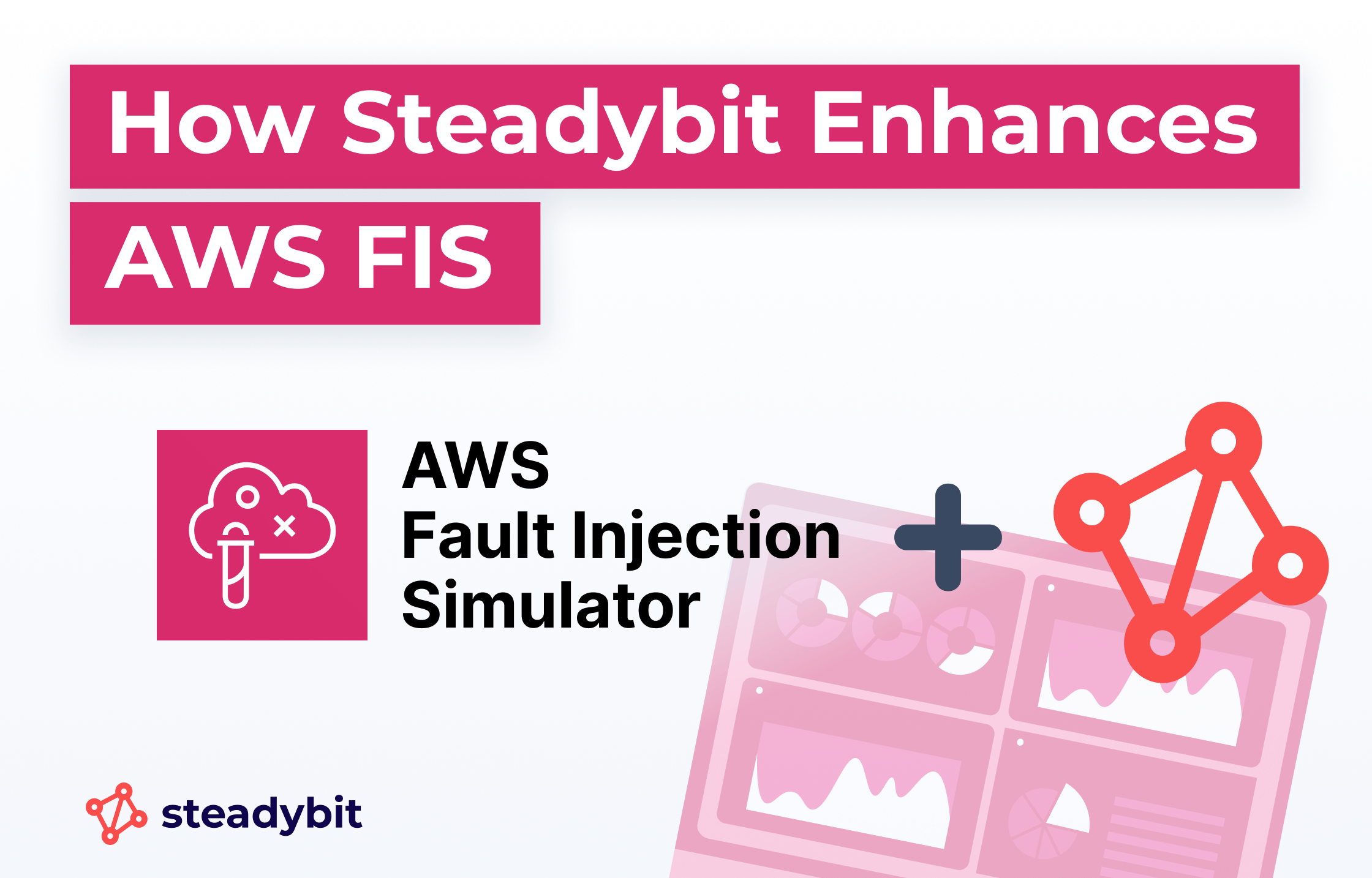How Steadybit Enhances Chaos Engineering with AWS FIS

The AWS Fault Injection Simulator (FIS) provides base functionality for running chaos experiments in AWS systems. The scope of its use in hybrid and multi-cloud architectures appears restricted at first glance. Steadybit provides a wider application range than its competitors because of its flexibility. Steadybit functions as a companion to AWS FIS to provide control and flexibility and simple chaos engineering across various infrastructure types.
Why Pair Steadybit with AWS FIS?
AWS FIS supports fault injection operations in AWS by enabling testing of services including Kubernetes, EC2 and serverless. Teams who work with extended environments together with deep testing requirements will find substantial value in Steadybit.
What Steadybit Brings to the Table
The platform enables cross-cloud chaos testing of AWS along with other cloud providers and on-premises systems to verify hybrid cloud reliability.
The user interface of this tool makes it easy to establish experiments and execute them along with permission management.
Users can develop custom fault scenarios while using existing templates for simulating crucial system failures.
The system includes SSO and pre-flight checks and provides secure deployment capabilities for on-premises use.
Beyond AWS-Centric Chaos Engineering
Steadybit enables chaos engineering operations that operate independently from particular platforms. Extend your experiments to:
- Users can introduce faults into both cloud-based and on-premises Kubernetes cluster deployments.
- The platform allows users to create failure simulations that affect their local data centers and their interconnected networks.
- Custom Apps: Test resilience in bespoke systems, ensuring unique setups are robust.
- The workload consists of AWS Lambda along with GCP Kubernetes and a legacy system located on-premises.
- AWS FIS provides AWS-based fault injection capabilities but Steadybit extends the testing scope to examine the entire system beyond individual AWS components.
Why Steadybit Stands Out
The hybrid environment chaos engineering capabilities of Steadybit surpass those available in AWS FIS:
- The platform enables users to simulate service disruptions between cloud services and on-premises systems.
- The system provides an intuitive interface which makes it easy for teams to use chaos engineering features.
- Users can create advanced fault simulation scenarios which go beyond basic injection to evaluate complex failure scenarios.
- The system provides features that match enterprise needs through its Single Sign-On functionality and advanced reporting tools.
- Steadybit operates with annual pricing which provides transparent costs to users because FIS uses a usage-based pricing system.
Integrating with Observability Solutions
Steadybit allows users to maintain observability tools like Datadog and Dynatrace as essential components during chaos engineering operations. Steadybit enables users to verify that monitoring tools function properly during system failures through its observability solution integration. Your infrastructure resilience testing goes beyond checking system resilience because it verifies that your critical incident monitoring insights remain reliable.
AWS FIS + Observability
The process of chaos engineering becomes comprehensive and straightforward through Steadybit’s adaptable solution which handles modern system complexities. The combination of AWS FIS extension capabilities with observability integration provides teams with essential tools for detecting system weaknesses and verifying monitoring solutions while ensuring hybrid and multi-cloud environment resilience. Steadybit provides you with tools to handle real-world issues confidently regardless of your system mix of cloud-native and on-premises infrastructure.